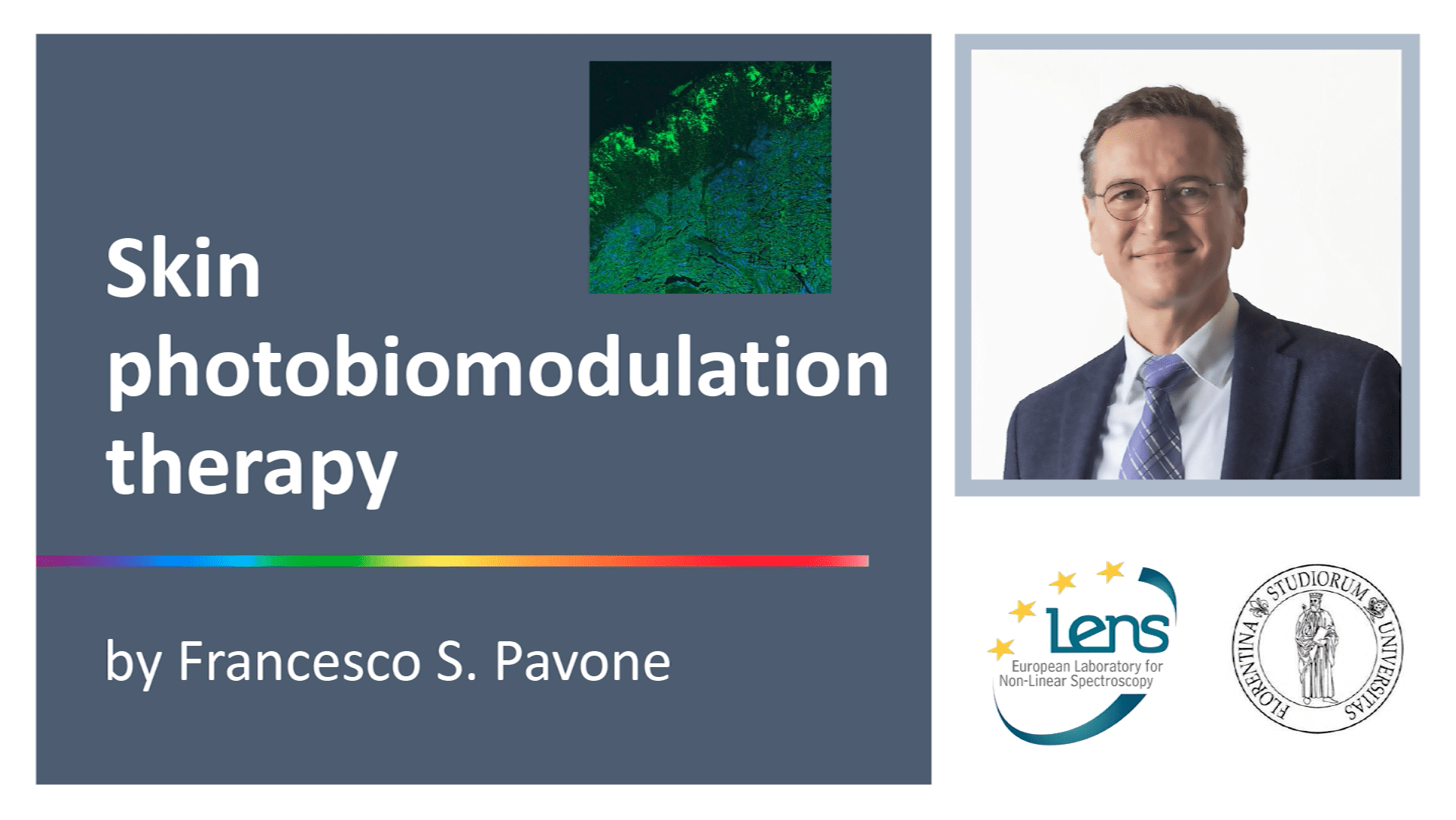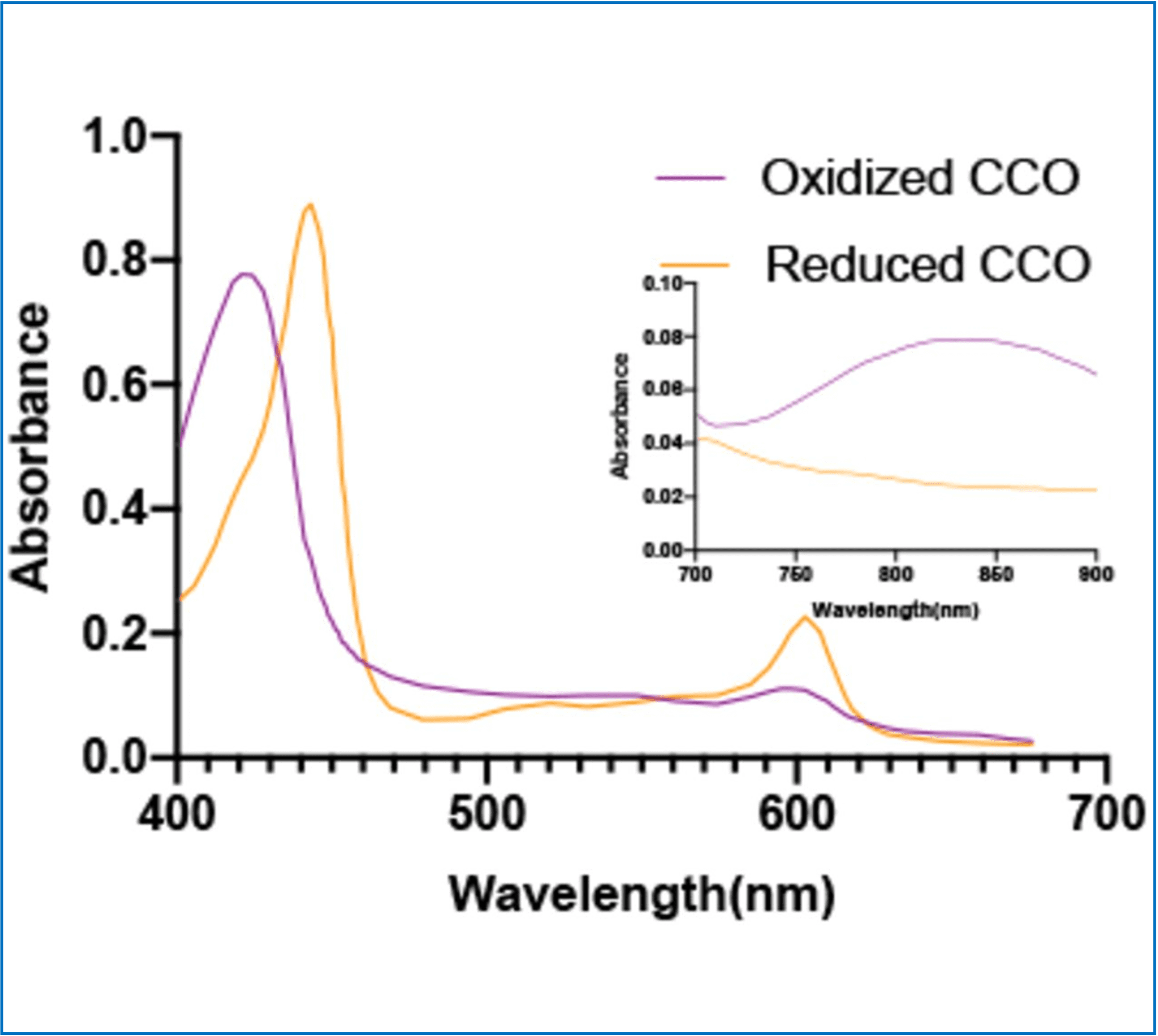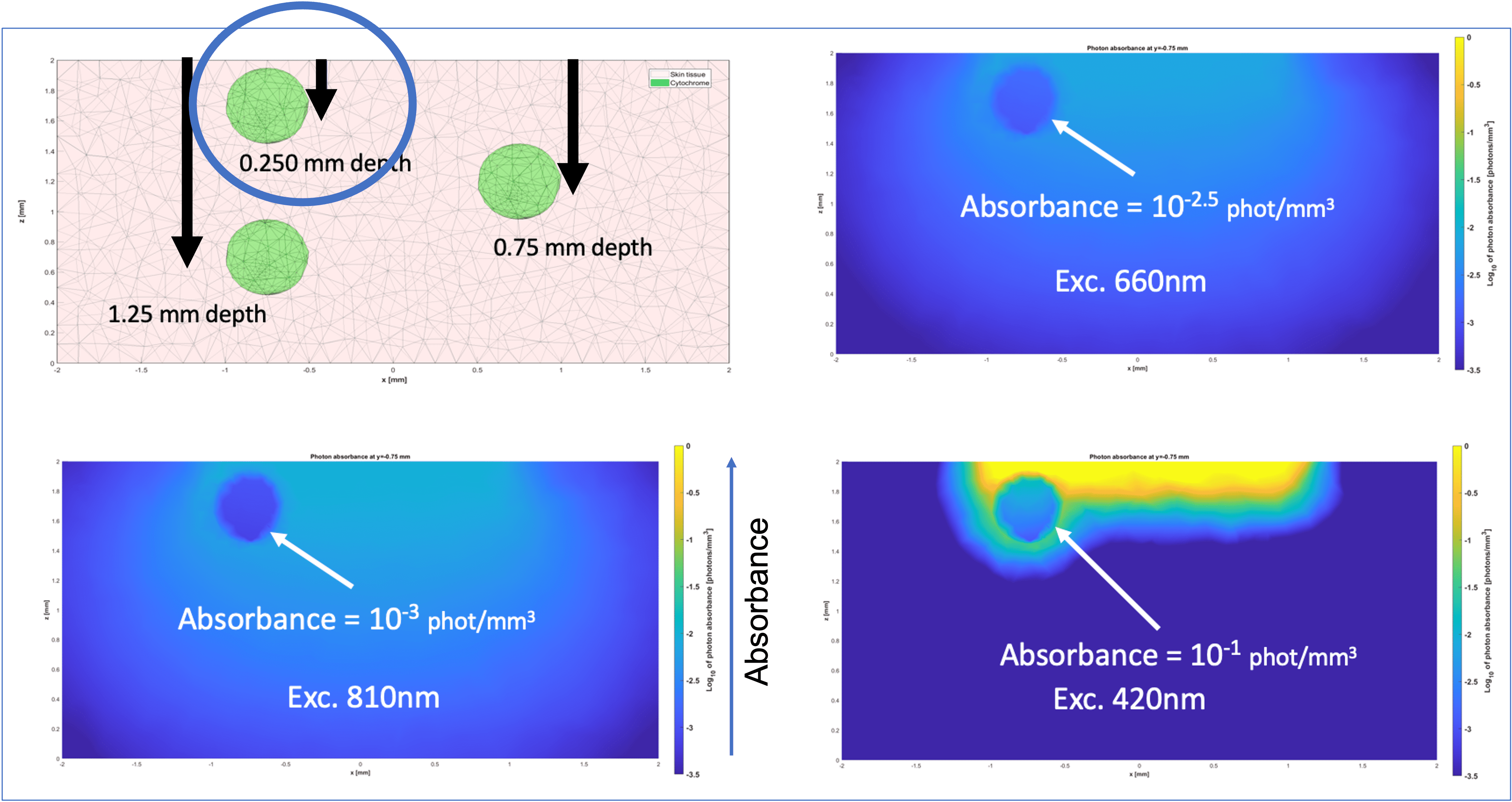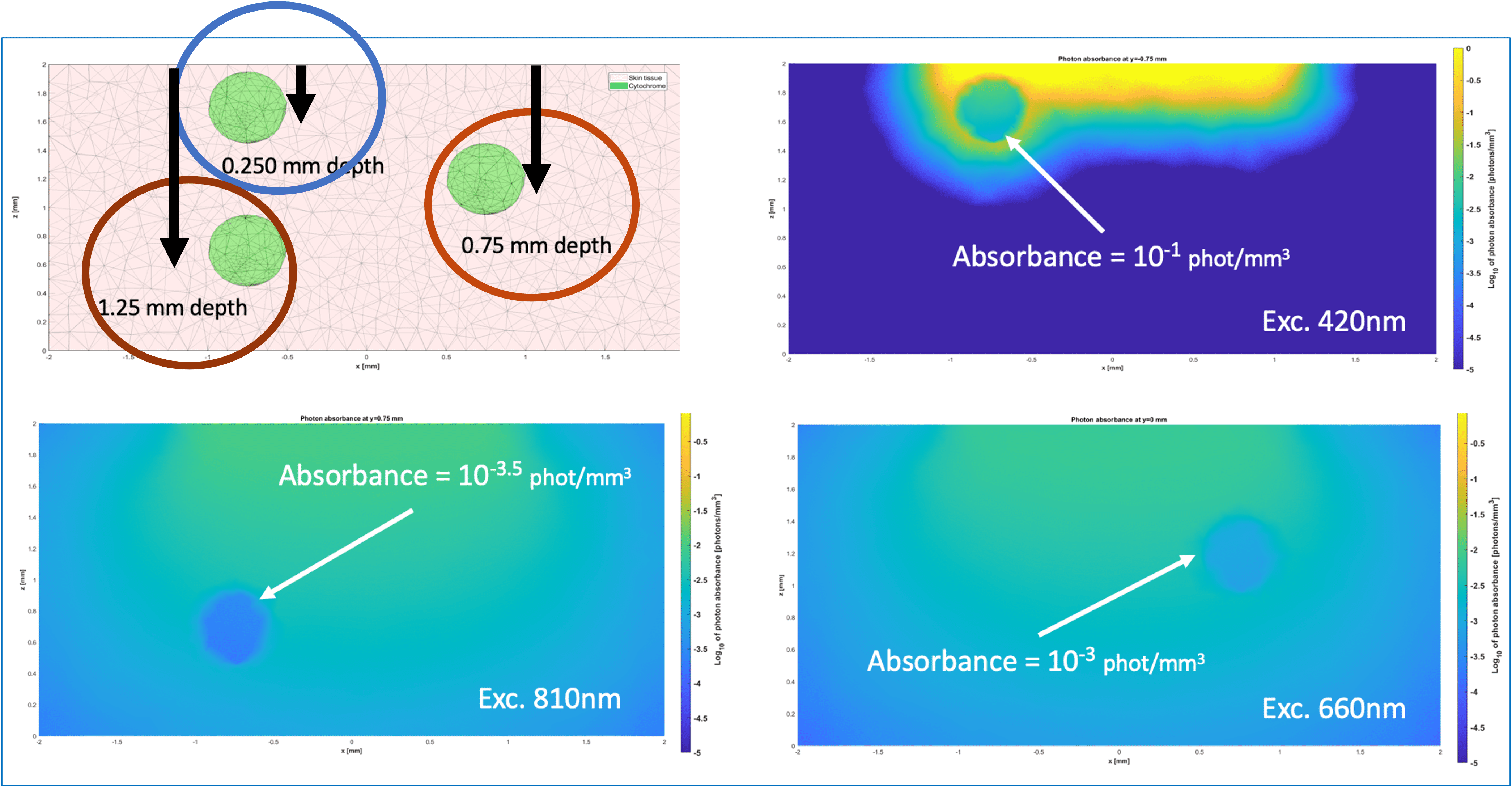
Skin Photobiomodulation Therapy
Video Lecture by Francesco Pavone
Francesco Pavone – University of Florence, European Laboratory of Nonlinear Spectroscopy (LENS) – talks about photobiomodulation therapy answering some basic questions: are lasers better than LEDs? What wavelength is more effective?
To see the video lecture: https://youtu.be/zirvb3b6l6g

As the interaction between cytochrome C oxidase (CCO) and light is the main biochemical principle behind PBM, he shows how the absorption capability of CCO is maximized with Blue Light (fig 1). Another important aspect to be understood is also how much deep light can penetrate skin tissue, considering absorption and scattering. There is a sort of “optical window” in the visible and infrared range of wavelengths indicating that to maximize light penetration we have to use red and near infrared light (fig 2). Pavone highlights a trade off: moving from the blue to red, light skin tissue penetration is maximized but the absorption capability of CCO is reduced. How are those two effects balancing themselves? A Monte Carlo digital simulation of a piece of skin tissue has been carried out to measure and compare blue light (420 nm), red light (660nm), and near infrared light (810nm) absorbance and resulting direct CCO activation at different tissue depths (0,250 mm, 0,75mm, 1,25mm). The simulation demonstrates that the blue light is from 30 to 100 times more effective in activating the CCO on the surface then the red light and the near infrared light because of the absorption capability of the CCO but blue light doesn’t go deep. (fig 3). Red light and near infrared light can photoactivate CCO in deeper layers of tissue but near infrared light is about 300 times less effective in photoactivating the CCO than the blue light on the surface and the red light is about a hundred times less effective in photoactivating the CCO at medium depth than the blue light on the surface (fig 4). In conclusion: blue light works much better on the surface, penetrates less, but going deeper, the red light and the near infrared light are much less effective in photoactivating the CCO. As a quite good therapeutic effect of the blue light in the deeper damaged skin tissue’s layers has been observed, Pavone suggests a possible explanation based on preliminary results of a very interesting experiment on fibroblasts irradiated with blue light, where researchers from Istituto di Fisica Applicata Nello Carrara – CNR, observed that after irradiation, there is a release of the components of the photobiomodulation in the extracellular matrix; these biochemical components reach other cells, which were not irradiated, and chemically activate those cells. This could explain the fact that, despite blue light remains on the surface, photobiomodulation activated by blue light penetrates, promoting healing also in deeper layers of skin tissue.




